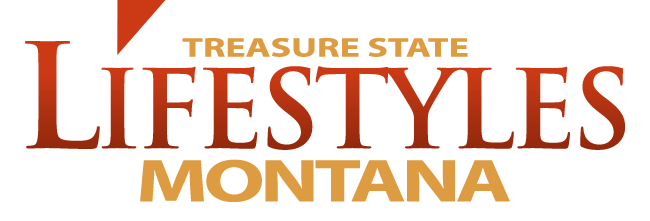Senator Taft speaking to a crowd on Main Street in Lewistown, 1952
By L. Abigail Jones
In the United States, those of us born after 1980 are part of the first generation who does not know our own history. Increasingly, we understand the lives of our predecessors only through obscure Pop Culture references, the past envisioned as a series of unconnected pieces sketched in caricature.
When current events mirror the conflicts of the 1950s so perfectly, it’s a tragedy when an entire generation only understands such an influential decade through the lens of the 1978 movie, Grease.
The truth is so much more complex.
From its inception, Lewistown, Montana has been a haven for the disenfranchised and the bold. It’s a city populated by the children of immigrants, earlier generations who left their ancestral homes in a world waking up from millennia of Imperial governance. The city was established by French and Indian Metis migrating away from British rule in Canada, contemporary with the influx of homesteaders heading west from the American Civil War. It was further colonized by families who fled the fall of the four great empires in the Old World, during the events surrounding World War I. Lewistown became the home that many of the descendants of those immigrants returned to, whether to live in truth or in memory, after fighting the corrupt leaders who rallied around Adolf Hitler in an attempt to re-create the broken empires across the oceans.
Up until 1950, the 20th century was characterized by drought, famine, and conflict more than by prosperity, with the exception of a brief period. After the final conflict of WWII in 1946, the industrial machinery built for the war effort was re-dedicated to the manufacture of goods. Post war, nations were rebuilt, wealth was distributed, and the Baby Boom was in full swing. It was the beginning of what historians call the “Golden Age” of America. Veterans returned to Lewistown or migrated for the first time, and the City of Stone – characterized by ties to the cultures of the Old West and the Old World – started to change.
***
Headlines from Ken Byerly, owner of the Lewistown Daily News, An Independent Newspaper, December 1949 to January 1950:
Hotel Calvert – Have your New Year’s dinner at Lewistown’s only Dining Room recommended by Duncan Hines. The Dining Room without Liquor!
China Denounces the U.N. Children’s Fund as “Pickpockets” Are Coyotes skulking on the edge of Lewistown?
Come to Cooley’s Chevrolet!
In January 1950, the 8-hour workday had just been established by the State office in Helena, and Kiplinger’s magazine, Changing Times, predicted the possibilities of the coming decade: mid-decade economic growth for the middle class, a boom in population, and a lack of focus on atomic power. The prognosticators believed there would be “no great inventions, in the ’29 sense,” but that the population would boom and a surplus of women would “cause some changes.”
The economic difficulties of World War II were still evident. After returning from the service, Frank Valach, son of mason John Valach, began working in Lewistown as a contractor. He lived above Victory Barber Shop and Lewistown Pharmacy with his new bride, Pearl, a nurse.
“Apartments were hard to find in those days.” Valach reflects. “We were only able to find one because we were friends with the owners of the building. We had our own rooms, but we shared a bath with the neighbors.”
The technology used by most families was a mix of the old and the “modern.” Even houses in the affluent Silk Stocking District (named because the residents could afford nylons) still had tanks buried in their yards that provided the oil for heaters, although electricity was available in some residences throughout the city. Milk was still delivered daily in a milk wagon, portioned out in glass bottles by Mr. Kuhne, from the local creameries.
Communication consisted of the Lewistown Daily Newspaper, KXLO radio station, party-line telephones, and letters. Lewistown was a city of neighborhoods, each with its own individual grocery store. But in the early 50s, outside of Lewistown, the world was moving.
Local resident Ted Hogeland, whose family spans five generations in the Judith Basin, remembers when Kruger’s Appliance Center had an open house to introduce the first black-and-white television in the area. It was 1953, the year downtown flooded.
***
As the 50s marched onward, the economic benefits provided by the G.I. bill, government subsidies, and increased industry began to hit Central Montana. More professionals and young people moved in. Lewistown had its share of the wealth that would engender decades of nostalgia. The Bon Ton Soda Fountain and Arro Confectionary were both popular hangouts for young people from Fergus High and St. Leo’s schools. Two theaters provided entertainment: the Judith and the Jeorgina (or “Fergus Theater”, now Cloyd Funeral Home). The Dash Inn was an in-demand novelty due to the innovation of fast food. Lewistown boomed with new stores and new ideas. Patrons shopped for modern fashions at the Mode O’Day, the Fad, and Vaughn-Ragsdale.
Commentators in that decade pointed out that such an era had not been seen for centuries, when so many young people had so much money, with so little responsibility. While the joy of a booming economy was palpable, the older generation was haunted by the costs of such luxury, bought with the blood of the past and the specter of conflict in the future. This new world was wonderful, after all, but the feuds of the past remained unresolved.
Unlike the previous generations who eked out a bare living to establish even a tentative foothold in a rough landscape, some Baby Boom children enjoyed unprecedented freedom. Where multiple families once shared one vehicle for a ride to town, the sudden availability of cars meant young men hot-rodded down Lewistown’s city streets. Meanwhile, electricity had not reached outlying farmsteads. While their concerns were well-founded, the Homestead and Depression generations took for granted that their children knew enough of the previous world’s hardships to understand they weren’t entitled to their good fortune. It was not a right, but a privilege inherited from the suffering of an epoch. And so the boom in Lewistown continued. According to Dick Hoffman, historian for Lewistown Raceway, there were multiple neighborhood grocery stores in 1956, and several full-service gas stations and garages.
Despite growing tensions caused by the unresolved consequences of WWII on the world stage, Lewistown was in fine form, set to celebrate its 75th anniversary the following year.
1956 was, perhaps, the last year that Americans could retain the hope of continued peace. Elvis Presley and Marilyn Monroe dominated the headlines. One can understand why that year is immortalized in Pop Culture; it was the calm before the storm that would affect all our lives for the next half century and beyond. It was the year future citizens of Lewistown would seek to duplicate in terms of prosperity and culture, fighting, on a local level, the economic consequences of a series of wars that occurred before we were born.
***
Headlines from Edward Fike, owner of the Lewistown Daily News, An Independent Newspaper, May 1 to December 25, 1957:
Air Travel Hearing Slated in Great Falls (for air travel service in Montana)
First Negro will Graduate From Clinton High School (in TN)
Lewistown Daily News Joins Jubilee Day Plans
Great Balls of Fire in Nevada: Cleft 1, Fireball from the AEC’s fifth atomic detonation, boils skyward, a detonation larger than the one in Hiroshima
U.S. to Keep ‘Open Mind’ in Red China Relations
In June 1957, chemical giant Monsanto debuted their “House of the Future” at Disneyland in an attempt to further their marketing of a new era of materials, when plastic would completely replace items fabricated from nature.
In July, Lewistown celebrated her Diamond Jubilee and 75th anniversary. Cheerful Old West displays embellished the windows of downtown businesses. The Lewistown Daily News spearheaded an effort to bring tourists and school alumni back to the area. Families of many nations were represented.
Five months later, on December 20, 1957, Elvis Presley received his draft notice for a proxy war between world nations, played out on the chessboard of Vietnam. Numerically, two years remained in the 1950s. Ideologically, too many people saw the shadow of the dusk of the Golden Age, just as it began.
An editorial in the Christmas Edition of the local paper emphasized two concepts in juxtaposition as the year faded out.
At the top of the page, a quote from Voltaire was printed in the negative space, almost an afterthought: “Although I Disagree With Everything You Say, I Will Defend Unto Death Your Right To Say It.”
And below, a quiet sentiment, a quiet wish, as the snow blew in Central Montana and the world changed: “Peace on Earth, Good Will to Men.”
***
There’s a striking old photograph of a Native American tribe walking down the street during a Fourth of July parade in Lewistown, sometime in the 1950s. The members stroll past stone buildings that were crafted by Croatian stone masons like the Burke Hotel, adjacent to Chow’s Chinese Diner. Local residents speak of Norwegian immigrants present at the time, alongside Black Americans, at least one of which worked at a shoe-shine booth in Victory Barber Shop.
In the picture, an abundance of car dealerships are blocked off by throngs of earnest attendees of the parade, dressed in ranching style or in fashions of the day. The anniversary of our nation, and our town, was celebrated “in Grand Style” with picnics, trout fishing, and stories of the “the good old ‘golden’ days.”
Anyone who studies history knows there is no such thing as a perfect history. Nostalgia is just a perception, an idealized memory. Yet, Lewistown is unique. Not just for the geographic location, but because the descendants of the refugees of history live and work together, albeit imperfectly, despite the march of world events around us. In an isolated valley in Montana, as we continue to live out the consequences of the fall of empires in the early 20th century, Lewistown is a town of living history, a place of remembrance.
This City of Stone, where cowboy culture blends with European architecture, retains remnants of America’s Golden Age evident in the vintage signs that still hang on the buildings. While the town is weathered, it’s hearty.
Come and visit Victory Barber Shop, still open after 75 years. Meander through the Hub, a former clothing and supply store, now antique market, where Frank Valach’s father inscribed Joe Alweiss’ policy of “Just Pay the Freight” in the front sidewalk, as an aid for hard-hit farmers in the difficult years. Judith Theater, the Mint Bar, Calvert Hotel, Don’s – all of them are open, as are so many other businesses with ties to the past.
Come visit, not for the trout, not for the view, but for the significance of the city as a monument to history, living in its people. Stop and talk, listen to the descendants who, though unassuming, have connections in their genealogy with multiple countries of the world and the forces that have shaped us all.
While the same concerns that have plagued humanity for centuries, and especially since the Golden Age, still affect Central Montana, it has remained, through era and epoch, a heartland, a haven, and a home.


